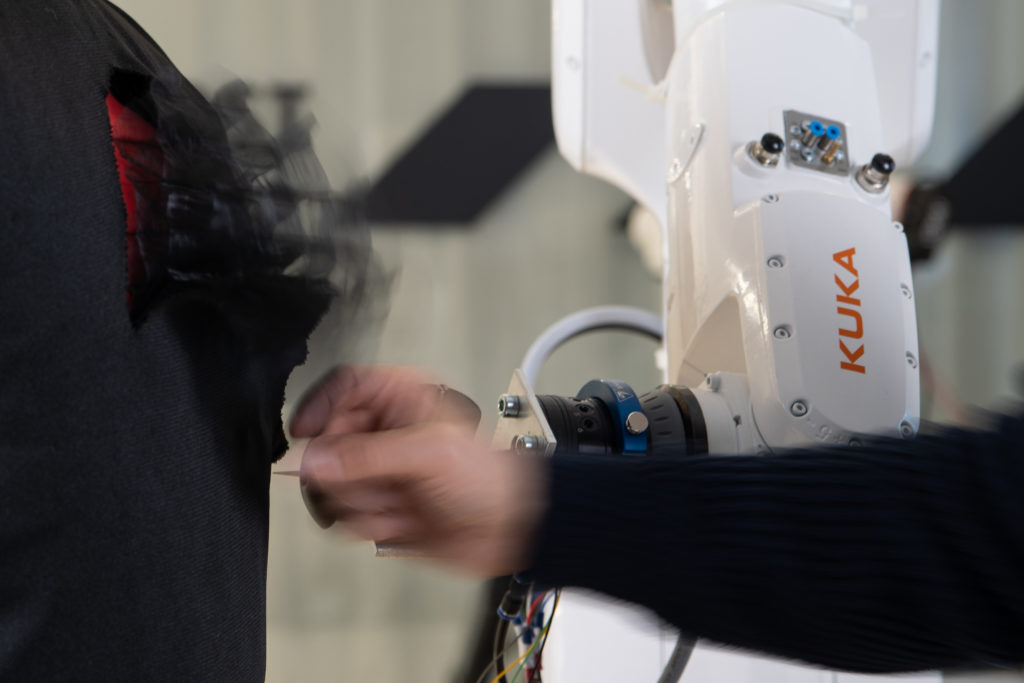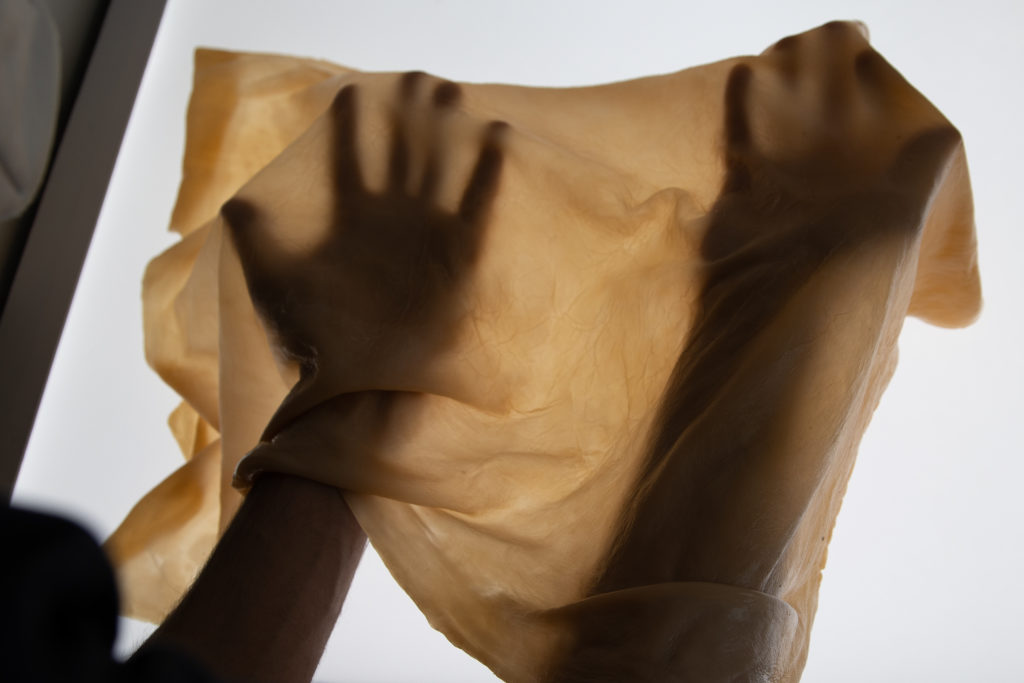Our research’s overarching goal is to bring fashion design from 2D into 3D in an interdisciplinary effort through new digital tools and by experimenting with new biochemical materials. We consider the following aspects of being the main goals of the research project. Several of our goals constitute highly experimental research, though with a great potential for creative innovation:

Exploring digital tools for fashion
Through our research, we want to foster fashion designers to think in processes rather than just geometry. There is obviously a large body of highly specialized, traditional knowledge in the textile industry. As a result, there is an obvious differentiation between the “analogue” and “digital” fashion. We consider robotic arms an interface that can negotiate between those two worlds by allowing designers to create their own processes and put their manual, material knowledge into machines.

INTRODUCING RENEWABLE BIOMATERIALS OR BIOCHEMICAL MATERIALS IN FASHION
Recently, 3D printing methods are rightly criticized because of the use of plastics. Hence, even though 3D printing technology is not yet established in fashion, it is important to think already today about alternatives for more skin-friendly and sustainable materials. Renewable biochemical materials promise to be an interesting option. The growth of bio-surfaces today is, however, mainly experimented with in two-dimension and serve as a kind of textile substitutes. But the potential of bio-materials lies in the fact that these substances can grow three-dimensionally.

EMBEDDING IN THE DIGITAL ENVIRONMENT
Embedding the overall development in the digital environment to allow integrative and data-informed strategies for clustering several processes of pattern design, garment design, its fabrication, and assembly into one continuous workflow and exchange data between those phases.
